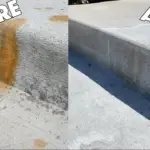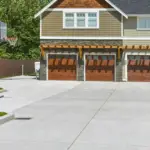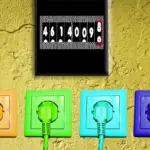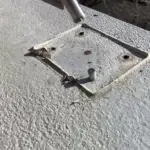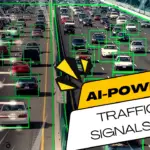Your real estate agent or home inspector may have asked if you’d like to have a sewer scope performed as part of your home inspection. It may seem like an added expense and kind of gross, but I highly recommend having one performed.

Why house sewer inspection is worth it?
Your sewer scope is going to check for any damage to the sewer line caused by age, soil expansion, or misuse.
Clogged sewer lines can lead to slow-draining sinks and tubs, leaks in the drain line, overflowing toilets, water damage, and even flooded basements.
Repairs to a sewer line can cost between $250 and $300 per foot, so it’s important to have a sewer scope performed before you buy to potentially avoid tens of thousands of dollars in sewer line repairs.
Where’s my house sewer line?
Your home sewer line runs underground from the home’s plumbing system through the yard and out to the street.
Sewer line depths vary, but it’s generally about four to twelve feet below the surface.
Out in the middle of the street is where it meets up with the city line.
Just remember, when you purchased your house, you purchased everything from the house all the way out to this city line.
Septic systems have a similar line, however, they don’t connect to a city line. If you have one of these, it’s best to have the entire system inspected by a contractor specializing in septic systems. A septic line scope should be included with that.
Like Us on Facebook!
Also Read: Sewer Camera Inspections: Costs, Solutions & More
Subscribe Us on YouTube!
What is a sewer scope inspection?
A sewer scope is a simple process that only takes a few minutes. A trained professional runs a camera from the home down the sewer line to the city tap.
They’ll identify the material the line is made of and look for any cracks, root penetration, blockages, deflections, or other damage to the line.
But don’t worry, not all issues require expensive sewer repairs or digging up the line.
A sewer cleaning contractor can often clear blockages, remove scaling, channeling, or oil buildup, and even penetrating root growth.
Minor cracks or deflections can be solved by re-lining the sewer line with a spray-on application or by inflating a lining into the interior of the pipe.
This is called trenchless repair and may be more cost-effective depending on the issues affecting your line.
Trenchless solutions in the house sewer industry refer to methods of repairing or replacing sewer lines without the need for extensive excavation or digging trenches.
These methods are often preferred because they minimize disruption to landscaping, driveways, sidewalks, and other structures on the property.
Trenchless solutions include techniques such as pipe lining, where a new pipe is inserted into the existing damaged pipe and inflated to fill the space, and pipe bursting, where a new pipe is pulled through the old one, breaking it apart as it goes. These methods can be more cost-effective and less time-consuming compared to traditional excavation methods.
Also Read: Download Sanitary Sewer System Design & Construction Manual
What to expect in sewer scope inspection?
Talk with your sewer scope technician about any issues found in your sewer line as well as the best ways to address them. Warning signs of a possible sewer issue can obviously be backflow into drains or toilets, especially in the basement level.
But keep an eye on the yard as well for any sort of sinking or depressions. Keep an eye out on the driveway and sidewalks for any sort of settlement or displacement that could be an indication of a sewer issue.
Just pay attention to the area where the sewer runs through the yard. Believe it or not, if you have a suspiciously lush and green section of your front yard, it might be an indication that it’s getting a little bit more fertilizer than the rest of the yard.
Sewer cleaning or drain cleaning
A sewer cleaning should be performed as part of regular home maintenance every one to three years, especially on older homes with clay or cast iron pipes. Now that you know your sewer’s in good working order, be sure to take care of it.
How to avoid issues with sewer line?
Remember, anything that goes down that drain goes down that line.
Avoid using your kitchen disposal like a trash can. Vegetable skins, coffee grounds, and eggshells easily clog up sewer lines.
Cooking oils and grease can build up on the interior of the line, restricting flow. All of these are better disposed of in the trash, just like grandma did.
Now, in the bathroom, despite what the label says, flushable wipes should never be flushed down the toilet. These monsters absorb fats and oils in the sewer line and grow into slimy mountains that those in the sewer industry affectionately call fatbergs.
They can damage your entire line and cost you a small fortune to remove. Also, avoid flushing baby wipes, diapers, and feminine hygiene products. A simple drain strainer installed in the shower will keep excess hair and shampoo from clogging up the shower lines.
Summing it all up
I hope this illustrates that with the high cost of repairs, it’s important to know the state of your sewer line before you buy.
Also, bear in mind, home insurance ends at the perimeter of the house, so any repairs that need to be done to the sewer line are going to be the homeowner’s responsibility.
Thanks for reading, and be sure to check out our other article for helpful tips on other home-related subjects.
You can see a little bit of a bulge in the line just indicating how flexible these lines are versus those clay lines without cracking or breaking.
I didn’t run a bunch of water, and I can verify everything is reaching that city tap.


